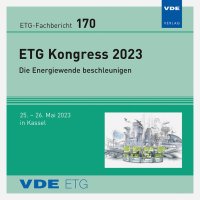Identification of worst-case weather years regarding heat pump considerations in distribution grid planning
Konferenz: ETG Kongress 2023 - ETG-Fachtagung
25.05.2023-26.05.2023 in Kassel, Germany
Tagungsband: ETG-Fb. 170: ETG Kongress 2023
Seiten: 7Sprache: EnglischTyp: PDF
Autoren:
Lytaev, Pawel (University of Kassel, Germany)
Drauz-Mauel, Simon Ruben; Lauven, Lars-Peter; Braun, Martin (University of Kassel, Germany & Fraunhofer IEE, Kassel, Germany)
Inhalt:
In this research paper, a methodology of identifying a worst-case weather year for heat pump considerations in distribution grid planning is proposed. The focus is on temperature time-series and its effect on power grids with a high heat pump penetration. The method identifies a worst-case weather year by comparing each week of each year with a minimal timeseries using dynamic time warping. The average temperature of each 7-day period is additionally taken into consideration. To verify the proposed methodology, three other extreme weather years are compared: the year 2012, which is considered in literature as a representative weather year, a synthetic extreme weather year by the German Meteorological Service, and a weather year derived from the isolation forest outlier detection algorithm. Based on these years, heat pump load profiles are determined and applied to a low-voltage benchmark grid model from the SimBench dataset using pandapower. It is assessed for one scenario of heat pump penetration in the grid, if, to which extent, and how often the limits of line and transformer loadings, as well as bus voltages are exceeded. It is shown that with the weather year derived from the proposed method, the highest peaks occur, while with the weather based on the isolation forest outlier detection, the number of overloads is higher but with a lower magnitude. If a low amount of peaks is considered manageable for the distribution system operator, then the outlier-detection-based method shall be taken into account for grid planning, otherwise the year which generates the highest peaks. Ideally, both should be considered.


